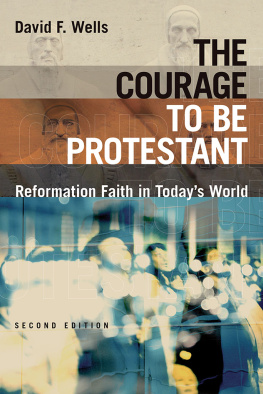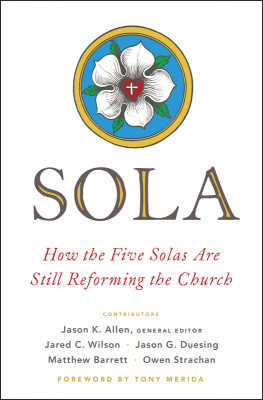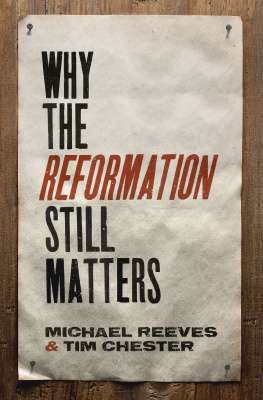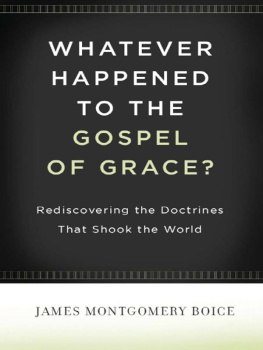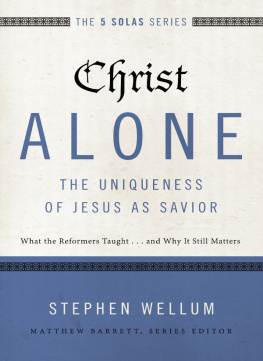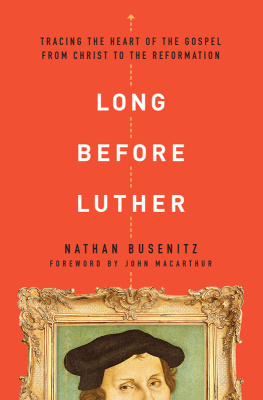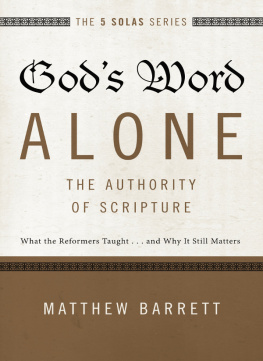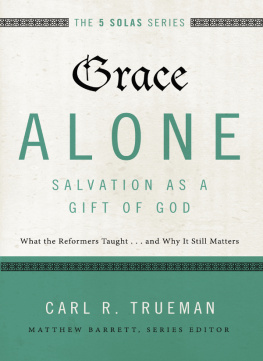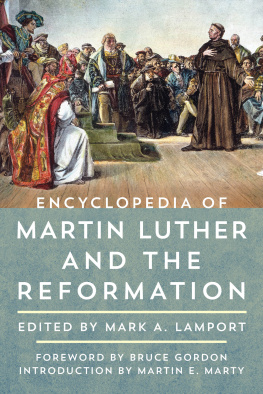Reformation Celebration: The Significance of Scripture, Grace, Faith, and Christ (ebook edition)
2018 by Gordon L. Isaac and Eckhard J. Schnabel
Hendrickson Publishers Marketing, LLC
P. O. Box 3473
Peabody, Massachusetts 01961-3473
www.hendrickson.com
ebook ISBN 978-1-68307-251-5
All rights reserved. No part of this book may be reproduced or transmitted in any form or by any means, electronic or mechanical, including photocopying, recording, or by any information storage and retrieval system, without permission in writing from the publisher.
Due to technical issues, this eBook may not contain all of the images or diagrams in the original print edition of the work. In addition, adapting the print edition to the eBook format may require some other layout and feature changes to be made.
First ebook edition March 2019
Scripture quotations marked NIV are taken from the Holy Bible, New International Version, NIV. Copyright 1973, 1978, 1984, 2011 by Biblica, Inc. Used by permission of Zondervan. All rights reserved worldwide. www.zondervan.com. The NIV and New International Version are trademarks registered in the United States Patent and Trademark Office by Biblica, Inc.
Scripture quotations marked NRSV are from the New Revised Standard Version Bible, copyright 1989 by the Division of Christian Education of the National Council of the Churches of Christ in the United States of America. Used by permission. All rights reserved.
Scripture quotations marked ESV are from The Holy Bible, English Standard Version (ESV), copyright 2001 by Crossway, a publishing ministry of Good News Publishers. Used by permission. All rights reserved.
Introduction
In 2015, plans were set in motion for a Reformation Celebration at Gordon-Conwell Theological Seminary. We wanted this conference to be strategically placed close to the five-hundredth anniversary of Martin Luthers posting of the Ninety-Five Theses on October 31, 1517. From the beginning, our intention was to involve as many of our faculty colleagues as possible, for in this way the celebration would represent numerous vantage points and thus enrich the experience for all. The assignment given to each was simple: address the genius of Reformation theology from your own particular discipline. As a result, historians, New Testament scholars, ethicists, Old Testament scholars, homileticians, systematicians, counselors, and other practical theologians all contributed. The set of collected essays before you represents reflections on Scripture, grace, faith, and Christ from these different voices on our faculty. Here you will find Reformation insights of ongoing significance for the sake of ministry in the church.
The conference took place October 2628, 2017, on the South Hamilton Campus in Massachusetts of Gordon-Conwell Theological Seminary. Although the majority of the attendees were local, there were many who traveled from various distances to hear the lectures and to celebrate and reflect on the Reformation. In addition to the crowd that gathered in the Kaiser Chapel, thousands joined the proceedings via live streaming. On the first night of activities, more than four thousand watched from their computers in places as far away as Puerto Rico, China, and India, and as nearby as the student residence halls. The wide reach of this conference was appropriate, given the world-historical significance of the Reformation. Interspersed with the lectures, Daniel Jay McKinleyminister of music, organist, and choirmaster of Christ the Redeemer Anglican Church in Danvers, Massachusettsled us in singing select Reformation-era hymns, some even with sixteenth-century syncopation. The Reformation Celebration Conference was a time for old friends to reunite and for new friendships to be forged, and to consider again the heritage of faith that has come to us through the religious shift that took place in the sixteenth century.
The Reformation
Five hundred years ago, Europe was on the threshold of change. No sector of society remained unaffected by the seismic shifts that altered political structures, technology, and religious expression. Certainly, the world-shaping nature of the new technologies of gunpowder, the printing press, and emerging national identities meant that the medieval structures could not remain unaffected. Tremendous pressures were also building in the area of religion. The increasing demands of the penitential system of the church obscured the saving work of Christ, placing the conscience of the average believer in a tenuous position. Even voices within the hierarchy complained that the abiding problems of the church emanated from the curia itself. The Reformation movements emanating from Wittenberg (Luther), Geneva (Calvin), and Zurich (Zwingli) were all attempts to see Western Christianity reform itself under the guidance of the word of God. These reform efforts contributed a new energy in the church that touched on at least three areas: a new religious outlook, fresh and practical expressions of the faith, and a driving sense of mission.
While both Protestants and Roman Catholics use the same terminology, they mean very different things by it. Take, for instance, the term faith. Luther was fond of saying that we are justified by faith alone and not by works. The fact that this became the hallmark of various streams of Reformation thought is well known. But perhaps what is not so well known is that Christian salvation of the Middle Ages, at least since the twelfth century, had emphasized love instead of faith as the key element. Strictly speaking, medieval Roman theology could say that faith was not saving. It was thus an epoch-making event when Luther, struggling through the biblical text, came to realize that the righteousness of God is revealed apart from the works of the law (Rom. 3:2128). The fact that we are saved by grace through faith moved Luther to the place where he could, along with Scripture, grant faith that new defining content that allowed it to supersede the medieval centrality of love (caritas) and its works (opera).
The term grace in Roman Catholic nomenclature refers to the aid granted the believer to do the next work of love. The task of the believer is to add works of love to faith so that it might be saving. This was conceived along the lines of an Aristotelian system that says a person becomes good by doing good deeds. The problem with this system is that it can never be determined how many good works one must do to be saved, thus always putting ones conscience in doubt. A reformational reading of Scripture focuses on the promise of right standing with God through Christ as a completed state. As Luther puts it in his treatise Two Kinds of Righteousness, Through faith in Christ, therefore, Christs righteousness becomes our righteousness and all that he has becomes ours; rather, he himself becomes ours. Thus grace from the point of view of the Reformation is not an aid for the accumulation of good works but the declaration of a new relationship and a new reality. Good works flow out of this new reality.
The term Christ also takes on new dimensions in Reformation theology. Under the increasingly oppressive penitential system, the good favor of Christ was increasingly hidden, which is one reason for the increase in the devotion of Mary. If Christ is not favorable, then there is no one better to get his attention than his mother. Mary, in the minds of many, was more merciful than Christ, so petitioning for her intercession made sense. Luthers own experience in the monastery ran along these lines. Christ was consistently portrayed as the judge of the Last Day. Luther was terrified at the prospect of falling into the hands of the God of justice without the benefit of a mediator. It was not until Luther realized through meditation on the text of Scripture that the justice of God is not the philosophical or the formal justice required of the believer, but the justice given through faith in Christ who came to save the lost. When he realized this, his fears were allayed and he found peace.


